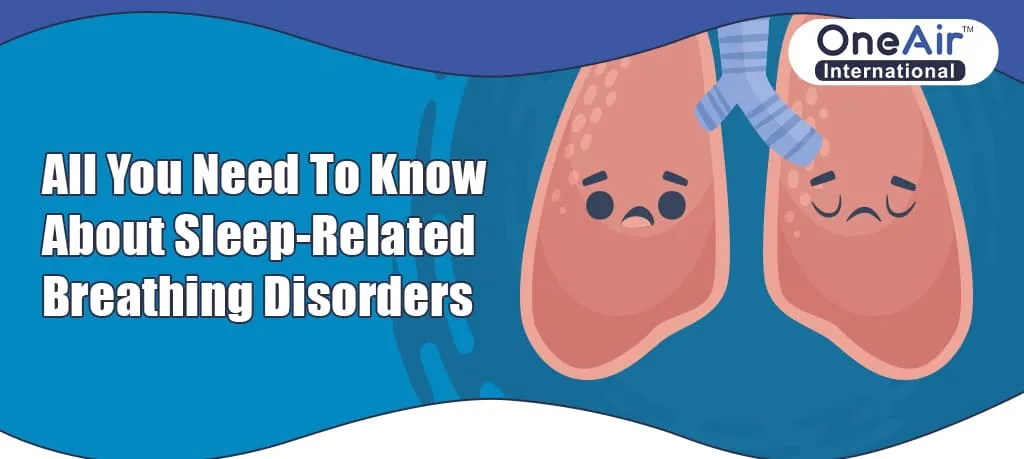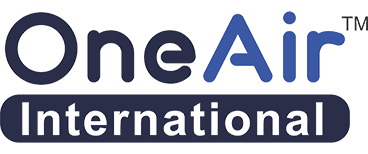
Sleep-related breathing disorders (SRBD) cover a variety of issues that disturb normal breathing during sleep, impacting the respiratory system. These disorders can seriously affect health, causing interrupted sleep and reduced oxygen intake. There are several types of SRBD, including the common Obstructive Sleep Apnea (OSA), where breathing stops or becomes partial due to airway blockage. Central Sleep Apnea (CSA) is another type where the brain fails to send proper signals for breathing. Recognizing SRBD symptoms like loud snoring, daytime sleepiness, and morning headaches is important. Treatment options range from lifestyle changes like weight loss to using devices like Continuous Positive Airway Pressure (CPAP) machines that help maintain open airways during sleep.
Types of Sleep-Related Breathing Disorders
Obstructive Sleep Apnea (OSA)
Obstructive Sleep Apnea (OSA) is a widespread sleep-related breathing issue where a person experiences repeated interruptions in breathing during sleep due to a complete or partial blockage in the upper airway. People with OSA often show common signs such as loud snoring, sudden awakenings accompanied by choking or gasping, and feeling excessively sleepy during the day. Several factors contribute to the risk of OSA, including obesity, age, gender, and physical characteristics like having a narrow airway.
Central Sleep Apnea (CSA)
Central Sleep Apnea (CSA) occurs when the brain fails to send proper signals to the muscles responsible for breathing during sleep. Unlike Obstructive Sleep Apnea (OSA), there is no physical blockage in the airway. Instead, breathing halts and restarts because the body doesn’t make the necessary effort to breathe. CSA is often linked to specific health conditions like heart failure and neurological disorders. It is a breakdown in the communication between the brain and respiratory muscles helps highlight the distinction from OSA.
Complex Sleep Apnea Syndrome (CSAS)
Complex Sleep Apnea Syndrome (CSAS), also called treatment-emergent central sleep apnea, is a condition that combines aspects of both Obstructive Sleep Apnea (OSA) and Central Sleep Apnea (CSA). This syndrome may develop when OSA is being treated with continuous positive airway pressure (CPAP). While CPAP is effective in managing OSA, in some cases, it can trigger the emergence of central apneas. In CSAS, individuals experience a mix of obstructive and central sleep apneas, highlighting the complexity of this disorder.
Sleep-Related Hypoventilation Disorders
Sleep-Related Hypoventilation Disorders occur when there isn’t enough breathing during sleep, causing increased levels of carbon dioxide in the blood. This condition is often linked to factors like obesity, neuromuscular disorders, or chest wall issues. The insufficient ventilation leads to a buildup of carbon dioxide, impacting the body’s oxygen levels. Individuals experiencing this disorder may face challenges in getting enough air while asleep, which can result in daytime fatigue and other health issues. Recognizing the associations with obesity, neuromuscular problems, or chest wall conditions is vital for diagnosis and tailoring effective interventions to improve breathing and overall well-being during sleep.
Symptoms and Consequences
- The symptoms of sleep-related breathing disorders include:
- Loud and persistent snoring
- Episodes of interrupted breathing witnessed by a bed partner
- Excessive daytime sleepiness
- Morning headaches
- Difficulty concentrating and irritability
- Frequent nighttime awakenings
Untreated SRBD can have serious consequences, including
- Increased risk of cardiovascular diseases
- Impaired cognitive function
- Mood disorders
- Decreased quality of life
- Accidents and impaired performance at work or while driving
Treatment options
Lifestyle Modifications
Making lifestyle changes can significantly help manage sleep-related breathing disorders. For those with obesity, shedding excess weight is beneficial. Encouraging sleeping on one’s side, known as positional therapy, can prevent airway blockage. Avoiding alcohol and sedatives before bedtime is vital, as these substances relax muscles, potentially worsening breathing issues during sleep.
Continuous Positive Airway Pressure (CPAP)
Continuous Positive Airway Pressure (CPAP) is a widely used and effective treatment for Obstructive Sleep Apnea (OSA). It requires wearing a mask that delivers a steady flow of air, preventing the airway from becoming blocked during sleep. This constant airflow acts as a pneumatic splint, maintaining an open passage for easy breathing.





